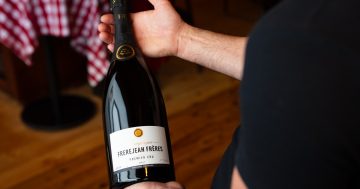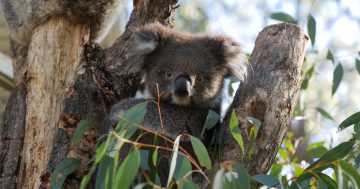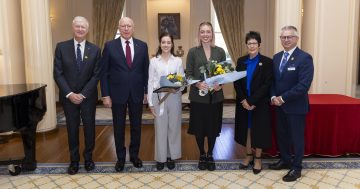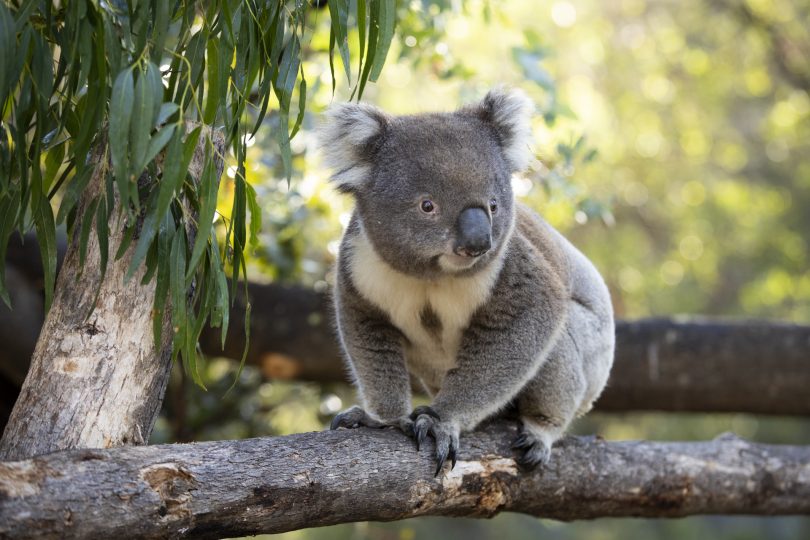
A koala at Tidbinbilla. Photo: Michelle Kroll.
There’s a month for everything and it turns out this month is all about koalas.
September marks the beginning of the annual fundraising and awareness campaign for the Australian Koala Foundation (AKF) called ’30 Days, 30 Ways to Save the Koala’.
AKF chair Deborah Tabart OAM, says the campaign presents a way for supporters from all over the world to engage in helping one of Australia’s unique and most vulnerable marsupials.
“The social media campaign aims to highlight the small changes people can make in their daily lives which collectively, will help save the koala,” Deborah said.
Koalas are currently listed as ‘vulnerable’ in Australia, but are said to be in serious decline due to habitat destruction, domestic dog attacks, bushfires and road accidents.
The AKF estimates that there are fewer than 100,000 koalas left in the wild, and are lobbying the Federal Government to have the listing brought up a couple of notches to ‘critically endangered’.
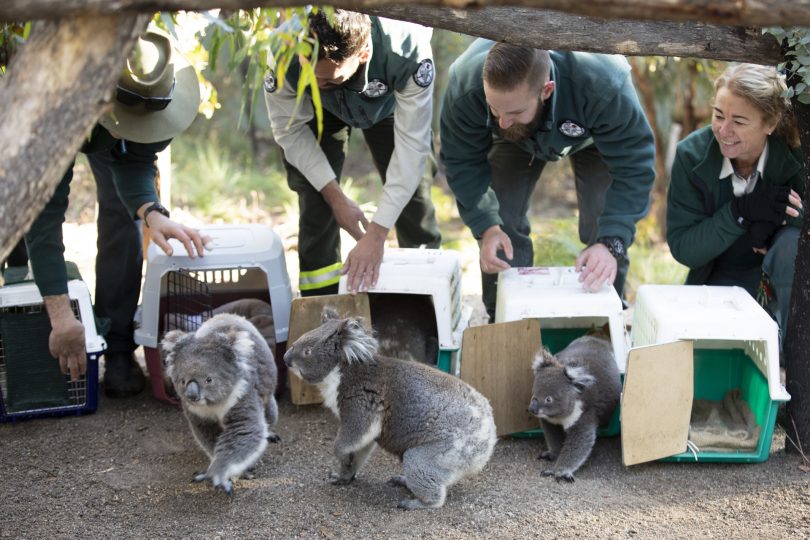
Staff from ACT Parks and Conservation release the koalas back into their home at the Tidbinbilla Nature Reserve in July 2020. Photo: Michelle Kroll.
September also marks 14 months since a family of five koalas was returned to their home at the Tidbinbilla Nature Reserve in the ACT.
The five koalas were evacuated to the Australian National University (ANU) in February 2020 to escape the Orroral Valley fire and subsequent flooding rain.
Tidbinbilla’s first foray into threatened species conservation began with the introduction of koalas in 1939. The current family of koalas were introduced following the devastating 2003 bushfires which wiped out all but one koala, later named ‘Lucky’.
Research Fellow at the ANU, Dr Karen Marsh, said this is a managed population originally brought from other states. Surprisingly little is known about wild koalas in the ACT and surrounding regions.
“There are very few records of people seeing wild koalas in the ACT itself,” she said.
“But they do turn up around Queanbeyan and Bredbo, both areas immediately adjacent to the ACT. And I’m sure koalas don’t respect state boundaries.”

Koalas are hard to spot but scat is solid evidence of their presence. Photo: Dave Gallan.
Koalas are experts at camouflage such that Karen compares looking for them to “looking for a needle in a haystack”. She says most of the population numbers are estimates based on scats.
“Scats on the ground are a very good way of establishing whether or not there are koalas in an area, but it’s very hard to know how many koalas are in the area. You can really only make a best guess.”
Karen and the rest of the ANU team also tracked a wild population in the Monaro region for several months after the Black Summer bushfires.
They rescued as many koalas as they could and once the area was safe again, microchipped them, equipped them with GPS tracking and released them back into their scarred home to see how they would cope.
“At the end of the nine months we caught them again, took the tracking collars off and checked their health. We found they were in better condition than when they were released.”
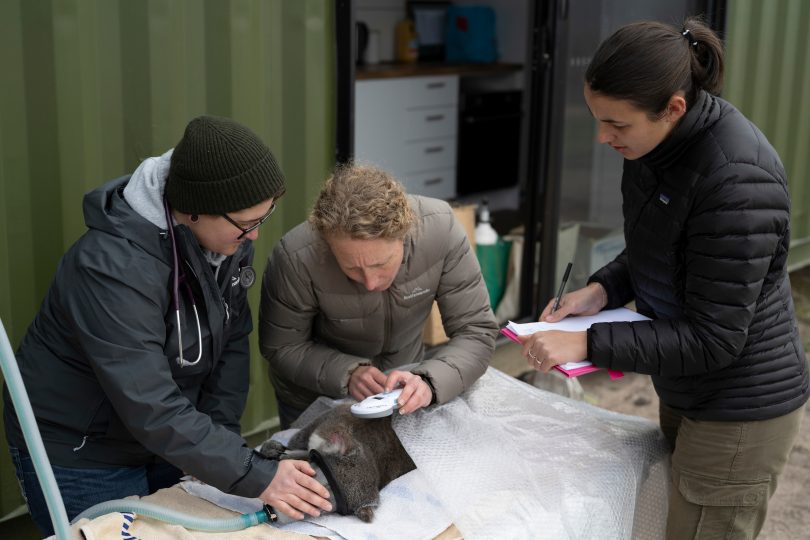
Researchers from ANU document the condition of a koala before its release back in to the bush at the Two Thumbs Wildlife Trust’s koala sanctuary at Peak View. Photo: Supplied.
Karen said that compared to many other wild koala populations in Australia, those around the ACT have very few instances of chlamydia.
“There’s a specific strain of chlamydia common to koalas and it can severely impact their capacity to reproduce. Some of the ones we helped were affected but they didn’t seem to show any symptoms. Nearly every female had a joey too.”
The other pleasant surprise for Karen was that there were more koalas there than they had originally thought.
“During the course of the rescue operation, we found almost 10 times as many koalas as the scat studies had previously indicated.”
Karen says that if you do happen to spot a koala the best thing to do is report it to the ACT Parks and Conservation Service.
“Every report goes a long way in helping us know where they are and how best to protect them.”
If you would like to take part in the ’30 Days, 30 Ways to Save the Koala’ campaign for Save the Koala Month, follow AKF social media platforms to learn more.











